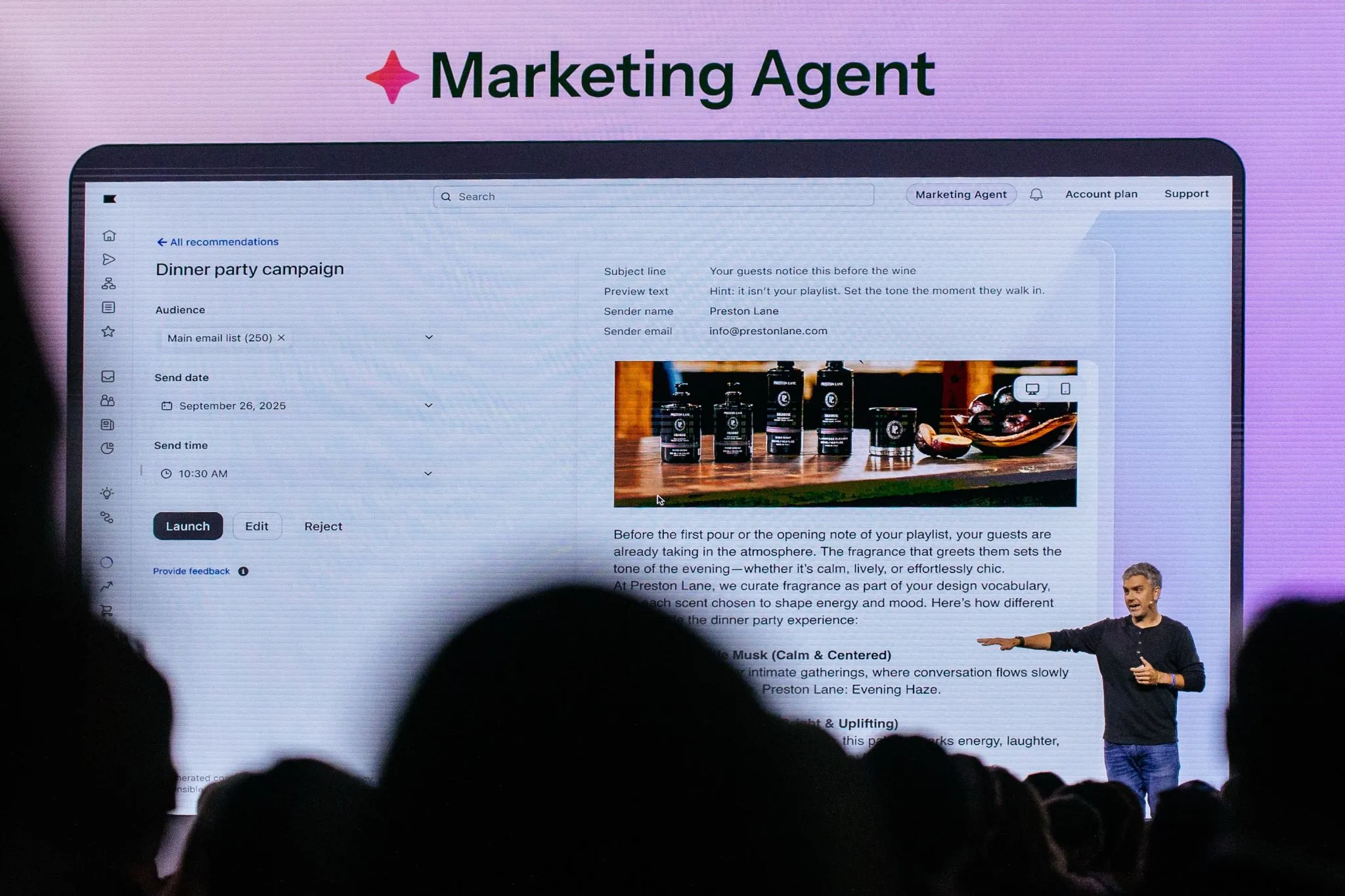網誌
Ecommerce Digital Marketing: Considerations and First Steps
Getting started on dynamic product ads (DPAs) for your Shopify store using Shopify’s Facebook and Google channel integrations. Covers Facebook Dynamic Ads and Dynamic Product Ads and Google Text, Shopping Ads, and Smart Campaigns.

Considerations Before Starting
If you have launched your new online store, what are next steps for you to begin your digital marketing? How does digital advertising fit with your larger marketing strategy that may include content marketing or social media marketing? If you are a new business that still needs to build up an online presence, then digital advertising can help you quickly reach new customers through targeted marketing.
We encourage merchants to ask themselves these quick questions before getting started:
- Do you already have existing digital marketing activities? How will advertising fit into your overall strategy? When planning campaigns, consider who will be managing them and what the realistic amount of time they can spend on managing campaigns are. Below, we will also highlight why optimizing dynamic ads can be efficient ways to reach audiences.
- Do you have a benchmark or past comparisons? A benchmark may not always be immediately comparable, but take a look at what you have. For example, do you already have some data on cost-per-click (CPC) or cost-per-acquisition (CPA) from other channels? Keeping them in mind will help you decide on the effectiveness of these campaigns.
- Who are your target customers? What channels do they use and spend time on and how do they find products? Many shoppers still spend time on Facebook, making it an effective channel. In Hong Kong, knowing what language customers search in may also affect the keywords you bid for, especially for Google Search or Shopping campaigns.
Shopify’s Facebook and Google Channel Integrations
Digital advertising on Google and Facebook can help you reach shoppers who already have an intention to make purchases. The campaigns we discuss best leverage Shopify’s integrations to Facebook and Google to deliver dynamically generated ads with the most relevant products to the targeted audiences based on the product catalog. These ads are able to deliver highly relevant content to a large group of audiences and do not require active management for Shopify merchants with these channel integrations. If you install Shopify’s Facebook and Google integrations, you can quickly set up advertising campaigns with budgets, timeframes, specific keywords or personas.
Both Facebook and Google channels display performance data. Make use of these to measure the effectiveness of your chosen channels. We recommend tracking the information below to get a full picture of what channels may be more effective for overall reach or optimizing conversions:
- Return on Ad Spend (ROAS)
- Click-through Rate (CTR)
- Cost per click (CPC)
- Cost per thousand (CPM)
- Cost per acquisition (CPA)
- Conversion percentage
- Average Order Size
Below, we will focus on ads that help merchants get started in reaching highly relevant potential customers and optimizing conversions to a purchase. The campaigns we discuss will help develop new customers as well as re-engage in old customers.
Facebook and Instagram Dynamic Ads
After you have set up Shopify’s Facebook sales channel, you can directly create audience building ads to increase store traffic,dynamic retargeting ads to introduce new products to return customers, and Facebook Page posts. The Shopify Facebook channel uses the same Shopify product catalogue for Facebook Marketing, Instagram, and Facebook shop, allowing you to efficiently create multichannel ads.
Shopify’s Facebook integration allows you to set up ads on your own as well as use dynamic ads. Dynamic ads allow you to set your target audiences, budget, and ad copy like regular ads, but inserts approved items from your store inventory to load. This allows you to display fresh content or test rotating items for the same target audience.
Facebook Dynamic Ads for Broad Audiences (DABA) utilizes broad based targeting to similar audiences to reach new customers who have never interacted with your brand or store. Based on your social signals (such as posts you’ve interacted with, it will deliver relevant products to increase purchasing chances. This type of ad is good for customer discovery.
Facebook Dynamic Product Ads (DPA) show specific products that a potential customer has already interacted with your store to further push for purchase if they haven’t already made one. As many shoppers may need time to consider, this type of ad for retargeting is effective for reminding people who are interested in your items.
Instagram ads and the Instagram shopping can be managed from your Facebook channel. However, merchants in Hong Kong will need to set up their Instagram shopping through the help of a partner. Please contact us if you would like to set up Instagram Shopping to create a more convenient online shopping experience for customers.
Google Text and Shopping Ads
Once you set up Shopify's Google channel, your products and relevant information about your Shopify store will be automatically synced with the Google Merchant Center and you can update your Google product listings directly from your Shopify admin. Eligible stores selling in the United States, with Shopify's Google channel synced to the Google Merchant Center can have products to appear in Google Shopping tab search listings for free.
Google is often an effective channel to reach customers who have purchase intent when they are searching for products like yours. Google offers a variety of ad placements that are called Ad Campaigns, such as text Search campaigns, Display campaigns, Video campaigns on Youtube, App campaigns, Shopping Campaigns, and Smart campaigns.Smart Campaigns allow you to create ad content with minimal management, in a geographic location that you choose, across Google’s network that includes Google Search, Google Maps, Gmail, YouTube, and Google partner websites. For the purposes of this piece, we will focus only on Search text ads and Google Shopping Ads.
Using Google Search Text Ads
Google Search text ads are the traditional listings that display at the top of your search results, before organic content such as authoritative media websites and articles. Hong Kong merchants with Chinese-speaking customers may want to compare search terms in Chinese instead of English for conversions and price optimization. You can read more about how OUT OF STOCK optimized Chinese search terms for their furniture.
Setting Up Shopping Ads and Smart Campaigns
Google also offers more visual Shopping Ads and Smart Campaigns that offer dynamic content. Shopping Ads include product images with title, price, and ratings and Smart Campaigns can be used to set ads dynamically. For this post, we will focus on the two components of a Smart Shopping Campaign: the search component and the retargeting component.
Like the Search text ads, Shopping Ads allow you to bid for relevant keywords for your product title and descriptions so that they can show up at the top of the search results. Bidding on the right keywords helps you attract shoppers for your type of product, whether they know about your brand. Note that bidding for Shopping Ads do not offer the same specificity that text ads do, but because the keywords are product focused, it is possible for an emerging brand to be discovered. Shopping Ads also now display images at the top of product search results, which may occupy most of a mobile screen and encourage potential buyers to click.
The retargeting component takes people who have interacted with products on your online store and delivers the relevant products as a display ads on Google’s display network that goes beyond search (such as to e-mail or affiliates).
Next Steps: Setting Up Your Campaign
To start your campaigns, get the Google Channel and Facebook Channel apps (free) for your Shopify store and follow the setup instructions to create an ad account if you do not have one already. For your Facebook integration you can set up your dynamic product ad. The store product catalog automatically syncs product titles, images, descriptions, prices, and links to the ad platforms to ensure the ads are using the most updated information.
Once set up, you can go to your Google integration and select "Make available on Google". You can also batch sync products with an updated CSV to ensure the product titles and descriptions are optimized for the Smart Campaigns and a smooth synchronization process. For example, you can choose to upload 500 per day to ensure that products that are not approved can be caught and fixed and also to optimize product information.
Next, you can draft ad copies to be used for customer discovery and retargeting. Both Facebook and Google will rotate your published ad copies and include pre-approved item images. For example, if you are doing a broad base campaign to reach new shoppers, you may want to write ad copies that emphasize your store’s product categories, variety, or unique selling points. Your retargeting copies focused on addressing customer concerns, such as free shipping or guaranteed returns. As a best practice, separate your customer discovery and retargeting audiences as different groups or campaigns to measure performance.
Set an ad budget for both your platforms. After running your ads for a fixed period, say a month, review the data and refine your targeting options for the best-matched buyer profiles. If you are an established brand with a customer list, you can also use it to develop similar audiences to reach additional high relevance audiences.
Finally, depending on your product, make use of Shopify’s other sales channels, including Instagram,Amazon, and Facebook Messenger. You can also find out how to find new audiences and meet their expectations in this blog post.




